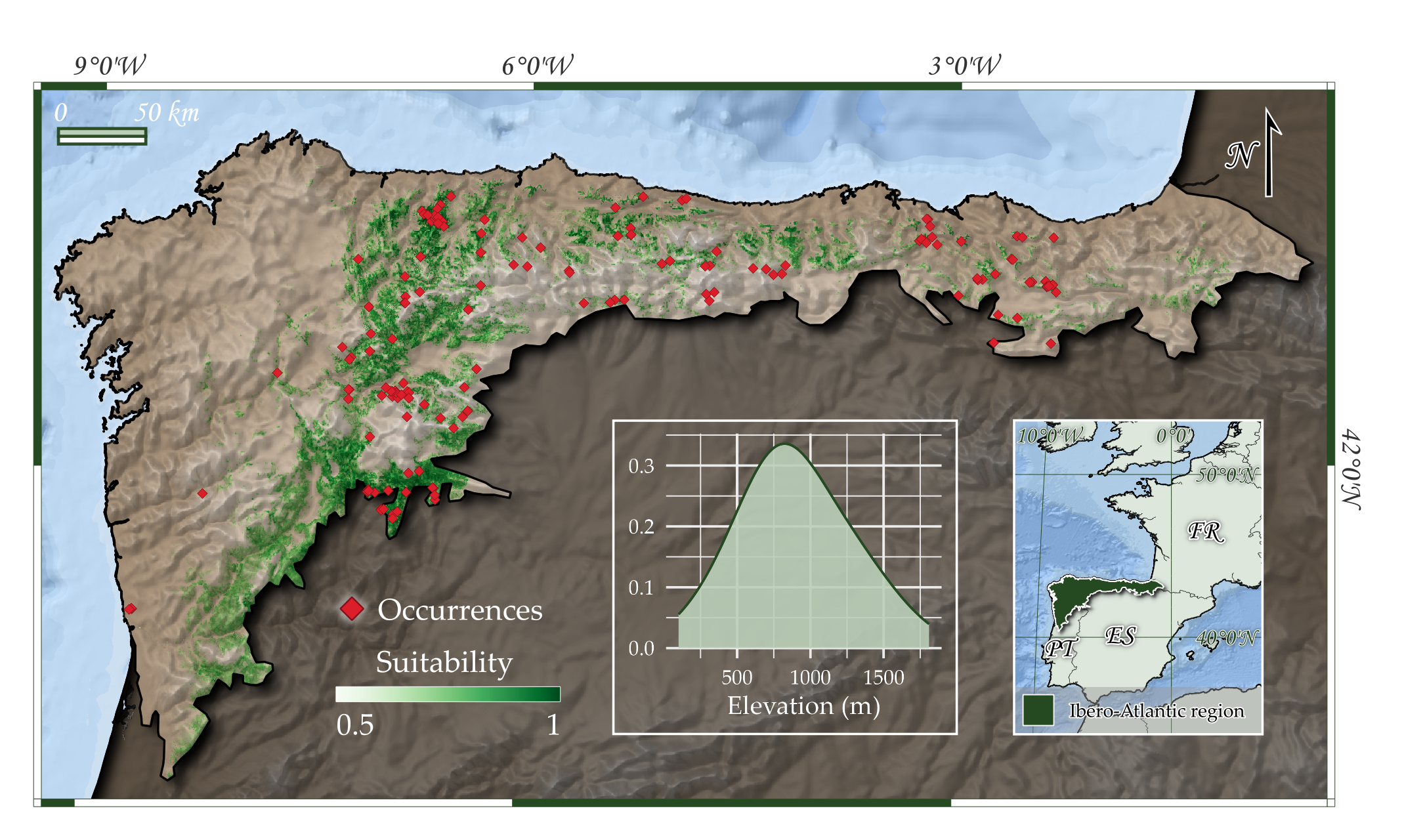S42m Erica arborea heaths
Description
Tall heaths in not too eroded siliceous areas preserving their full potential to support woodlands, especially of the units T182, T19A, T1By and T1D7. They thrive on more organic, less readily drained soils than those colonised by broom communities of the block S33. The small seeds of the dominant species enable an immediate colonisation of clearings and fringes, but as soon as birds kick-in, the evolution towards thickets of the unit S353 is rapid. Since the dominant species is a heath, we opt for creating the necessary new unit (all EUNIS units mentioning Erica arborea, mostly in the block @S5, correspond to purely Mediterranean communities, highly different from these very original neatly Atlantic and often almost paradoxically orophilous and cold- and snow-resistant shrublands) within S42, but the just described spatiotemporal position would rather suggest its inclusion in S33, as traditionally done by syntaxonomical formalism.
Floristic Composition
Frequent species
Indicator species
Regional distribution
